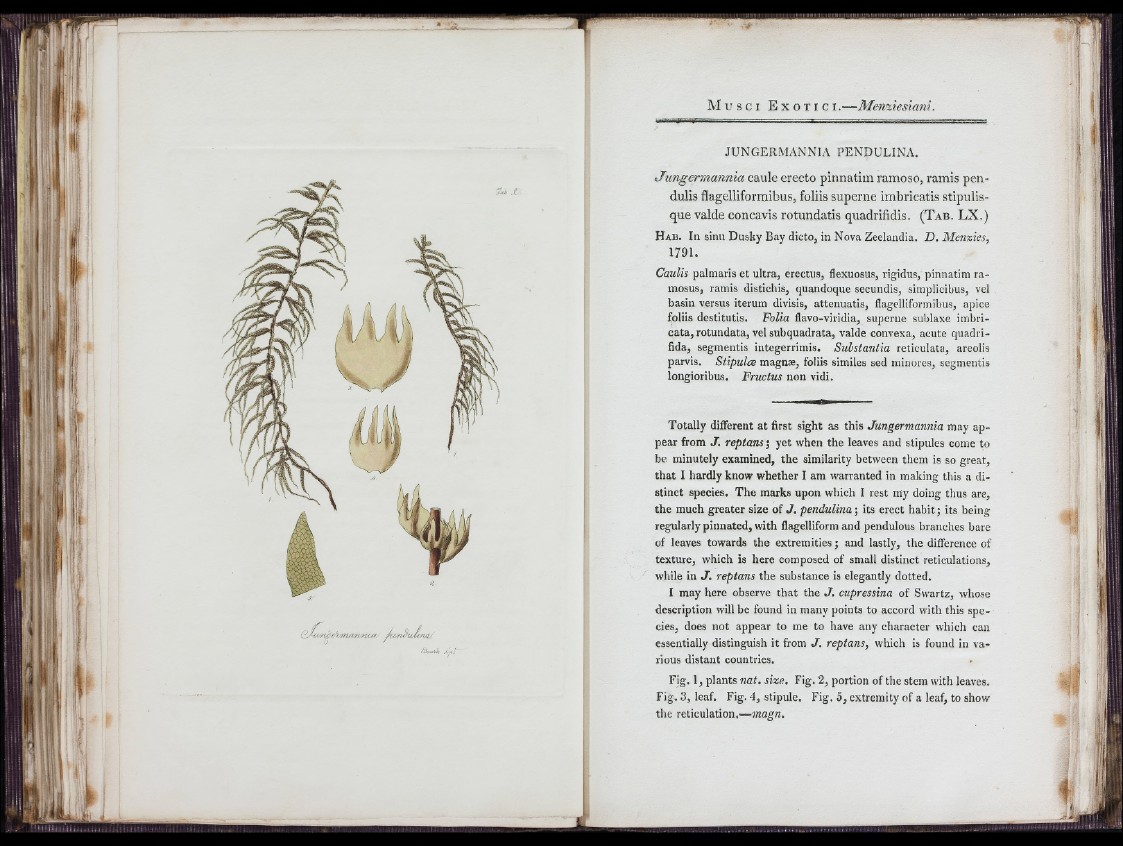
t
t'ium'ih Jirip
JUNGERMANNIA PENDULINA.
J u n g e rm a n n ia caule e re c to p in n a tim ram o so , ram is p e n d
u lis flageliiformibus, foliis su p e rn e im b ric a tis stip u lis q
u e valde concavis ro tu n d a tis qu ad rifid is. (T a b . L X .)
Hab. In sinu Dusky Bay dicto, in Nova Zeelandia. D. Menzies,
1791.
Caulis palmaris et ultra, erectus, flexuosus, rigidus, pinnatim ramosus,
ramis distichis, quandoque secundis, simpiicibus, vei
basin versus iterum divisis, attenuatis, flageliiformibus, apice
foliis destitutis. Folia flavo-viridia, superne sublaxe imbricata,
rotundata, vel subquadrata, valde convexa, acute quadrifida,
segmentis integerrimis. Sulstantia reticulata, areolis
parvis. Stipuloe magnæ, foliis similes sed minores, segmentis
longioribus. Fructus non vidi.
Totally different a t first sight as this Jungermannia may appear
from J . reptans'j yet when the leaves and stipules come to
be minutely examined, the similarity between them is so great,
that I hardly know whether I am warranted in making this a distinct
species. The marks upon which I rest my doing thus are,
the much greater size of J . pendulina; its erect habit; its being
regularly pinnated, with flagelliform and pendulous branches bare
of leaves towards the extremities; and lastly, the difference of
texture, which is here composed of small distinct reticulations,
while in J . repians the substance is elegantly dotted.
I may here observe that the J . cupressina of Swartz, whose
description will be found in many points to accord with this species,
does not appear to me to have any character which can
essentially distinguish it from J . repians, which is found in various
distant countries.
Fig. 1, plants nat, size. Fig. 2, portion of the stem with leaves.
Fig. 3, leaf. Fig. 4, stipule. Fig. 5, extremity of a leaf, to show
the reticulation,—magn.